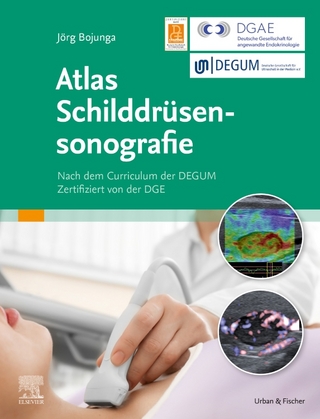
The Human Hypothalamus
Elsevier Science Publishing Co Inc (Verlag)
978-0-12-819973-2 (ISBN)
Dick Swaab (1944) earned his medical and doctoral degrees at the University of Amsterdam, where he became involved in brain research during his third year of medical school. He was Director of the Netherlands Institute for Brain Research from 1978 to 2005. Since 1979 he is Professor of Neurobiology at the Medical Faculty, University of Amsterdam. In 1985, Dr. Swaab founded the Netherlands Brain Bank (NBB) to serve as a source of clinically and neuropathologically well-documented research tissue. Since its founding, the Brain Bank has provided samples from more than 4,000 autopsies to 500 research groups in 25 countries. He was director of the NBB until 2005. He is Leader Research team Neuropsychiatric Disorders, Neth. Inst for Neuroscience, an institute of the Royal Netherlands Academy of Arts and Sciences (KNAW). Swaab is also appointed for 2011-2017 Chao Kuang Piu Chair of Zhejiang University, Hangzhou, P.R. China. His major research interests focus on, sexual differentiation of the human brain in relation to gender identity and sexual orientation, aging of the brain, Alzheimer’s disease, the neurobiological basis of depression, suicide and eating disorders. He has published over 540 papers in SCI journals, authored more than 200 chapters in books, and edited more than 60 books. Swaab mentored 84 PhD students from which 16 are now full professor. He is “Companion in the Order of the Dutch Lion, bestowed by her Royal Majesty Queen Beatrix of the Netherlands. In 2008 Swaab obtained the Academy medal for his role in national and international neuroscience. Dick Swaab is author of the 2 volume monograph The Human Hypothalamus that appeared in the Handbook of Clinical Neurology series, Elsevier, Amsterdam (1000 pp) and the Dutch best seller We are our Brains (450.000 copies sold), that is translated in 14 languages. A children's version of the book (You are your brains) has also appeared in Dutch in 2013 and Russian (2014). Swaab's H-factor is 76. Dr. Ruud M. Buijs is head of the Physiology department of the I.I.Biomedicas at the UNAM university and leader of the group Hypothalamic Integration Mechanisms. In that group, the scientists study how the brain and body interact with each other, and hereby the attention is focussed on autonomic and hormonal regulation of body functions under the influence of the biological clock of the brain. Felix Kreier is a pediatrician and affiliated with OLVG Hospitals in Amsterdam, The Netherlands. Paul J. Lucassen did his PhD in 1995 on Alzheimer’s Disease at the Netherlands Institute for Brain Research in Amsterdam. After a.o. a postdoc in Leiden, he became Full Professor of Brain Plasticity in 2011 at the Swammerdam Institute for Life Sciences (SILS) of the University of Amsterdam, The Netherlands. His group studies molecular, nutritional, pharmacological and environmental regulation of brain plasticity. They combine molecular tools, in vitro/vivo model systems, human brain tissue, cohort studies and brain imaging. A major focus is on adult neurogenesis and cognition in relation to; (early life) stress, exercise, enrichment, depression, brain insults and dementia. Ahmad Salehi is affiliated with Stanford Medical School, Department of Psychiatry & Behavioral Sciences, in Palo Alto, CA, United States.
1. Introduction: The human hypothalamus and neuropsychiatric disorders
SECTION 21 Trauma and iatrogenic disorders
2. Chronic traumatic encephalopathy and the nucleus basalis of Meynert
SECTION 22 Neurobehavioral disorders
3. Hypothalamic stress systems in mood disorders
4. Light therapy for mood disorders
5. Neurobiology of peripartum mental illness
6. The hypothalamo–pituitary–adrenal axis and the autonomic nervous system in burnout
7. Posterior hypothalamus as a target in the treatment of aggression: From lesioning to deep brain stimulation
8. The implications of hypothalamic abnormalities for schizophrenia
9. The promiscuity of the oxytocin–vasopressin systems and their involvement in autism
spectrum disorder
SECTION 23 Epilepsy
10. Gelastic seizures and the hypothalamic hamartoma syndrome: Epileptogenesis beyond the lesion?
11. The interactions between reproductive hormones and epilepsy
SECTION 24 Neurodegenerative disorders
12. Alternative splicing in aging and Alzheimer's disease: Highlighting the role of tau and estrogen receptor a isoforms in the hypothalamus
13. Cholinergic neurodegeneration in Alzheimer disease mouse models
14. Autonomic disorders in Parkinson disease: Disrupted hypothalamic connectivity as revealed from resting-state functional magnetic resonance imaging
15. Hypothalamic a-synuclein and its relation to autonomic symptoms and neuroendocrine abnormalities in Parkinson disease
16. Lewy bodies in the olfactory system and the hypothalamus
17. Hypothalamic pathology in Huntington disease
18. Endocrine dysfunction in adrenoleukodystrophy
19. Hypothalamic symptoms of frontotemporal dementia disorders
SECTION 25 Olfactory system
20. The vomeronasal organ: History, development, morphology, and functional neuroanatomy
21. Pheromone effects on the human hypothalamus in relation to sexual orientation and gender
22. Kallmann syndrome and idiopathic hypogonadotropic hypogonadism: The role of semaphorin signaling on GnRH neurons
23. Olfaction as an early marker of Parkinson's disease and Alzheimer's disease
SECTION 26 Autonomic and sleep disorders
24. The hypothalamus and its role in hypertension
25. The heart is lost without the hypothalamus
26. Sleep disorders and the hypothalamus
SECTION 27 Addiction and pain
27. Molecular genetics of neurotransmitters and neuropeptides involved in Internet use disorders including first insights on a potential role of hypothalamus’ oxytocin hormone
28. The neurobiology of cluster headache
SECTION 28 Critical care and brain-death
29. Endocrine interventions in the intensive care unit
30. Hypothalamic function in patients diagnosed as brain dead its practical consequences
| Erscheinungsdatum | 04.10.2021 |
|---|---|
| Reihe/Serie | Handbook of Clinical Neurology |
| Sprache | englisch |
| Maße | 195 x 260 mm |
| Gewicht | 1360 g |
| Themenwelt | Medizinische Fachgebiete ► Innere Medizin ► Endokrinologie |
| Medizin / Pharmazie ► Medizinische Fachgebiete ► Neurologie | |
| Studium ► 1. Studienabschnitt (Vorklinik) ► Physiologie | |
| Studium ► 2. Studienabschnitt (Klinik) ► Pathologie | |
| ISBN-10 | 0-12-819973-3 / 0128199733 |
| ISBN-13 | 978-0-12-819973-2 / 9780128199732 |
| Zustand | Neuware |
| Haben Sie eine Frage zum Produkt? |
aus dem Bereich


